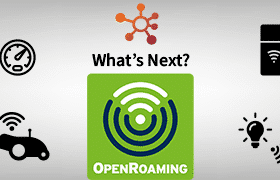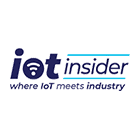White paper excerpt
Global IoT With eSIM Localization
Enterprises are increasingly global in operation. They need a centralized solution from a single service provider which solves their connectivity needs regardless of location and local regulations.
According to the analyst Transforma Insights, at least 70 percent of cellular connections remain active in just one country for the device’s lifetime. In many countries, permanent roaming for these devices will not be viable, as it will create issues in complying with regulations or commercial agreements with partner MNOs.
Hyperscale Cellular IoT – White Paper
This is an excerpt from our white paper Hyperscale Cellular IoT. The full white paper is available here if you like what you read. Don’t hesitate to contact us if you have any questions.

Keeping Up With
Competition From Disrupters
The ability to localize eSIMs to a local country is a must for mobile operators, not only from a compliance point of view but also for logistical reasons. Just think about the enormous potential savings for an IoT customer that can use the same eSIM for all IoT devices they will distribute globally.
Furthermore, mobile operators must offer a unified global IoT connectivity over partner networks, even when the connection has been localized to a partner network using eSIMs. As a result, they must go beyond roaming and become a disruptor in their market, keeping policy control, security, and IP assignment also for localized devices.
If they don’t, they risk losing business to innovative virtual mobile operators (MVNOs) that specialize in delivering flexible value-added IoT connectivity services. MVNOs are often skilled in integrating their operations with several MNOs. So, it is ironic that MVNOs can provide a more complete global IoT connectivity service than the carrier partners they rely on.
The remedy for mobile operators is to add a scalable and programmable layer of IoT connectivity control and combine this with roaming partnerships and their ability to localize eSIMs over the air when needed. Enea Aptilo IoT CCS offers such a hyperscale layer of connectivity control and security as a service. Here operators can connect their network, partner networks, and connectivity hubs to provide a unified global IoT connectivity service. In addition, they can perform eSIM localization without losing the customer to the local mobile operator.
Governments and Partners
Compliance With Rules and Regulations
This is another good reason enterprises rely on only one service provider for all their global connectivity needs. The cost of acquiring and maintaining contracts with service providers in different countries is significant. Add to this the need to stay updated and comply with local rules and regulations.
Prohibition on permanent roaming
During the last decade, mobile operators have struggled to offer global connectivity based on permanent roaming, even if they have negotiated reasonable roaming terms.
Regulators in countries such as Brazil, China, India, and Turkey have introduced or enforced rules prohibiting devices managed by overseas operators via roaming agreements. Some prohibit permanent roaming directly, while others indirectly based on local registration requirements or tax obligations.
We have also seen commercial-driven equivalents, e.g., in the US and Canada, where the operators themselves prohibit their roaming partners from having devices permanently roaming on their networks.
Compliance with these rules and regulations can be an effective show-stopper for global connectivity based on permanent roaming. In the worst-case scenario, it can mean that customers lose connectivity because someone has blocked their devices.
Data protection regulations
It is not only permanent roaming rules that have become stricter. Regulations about data protection, how personal data is used, and where it is stored are now in place in most developed countries. One example is the European General Data Protection Regulation (GDPR), which prevents personal data from being stored overseas. This is another reason for using hyperscalers such as AWS. Compliance with data protection rules will mandate a new IT architecture where storing data in a certain region or country is possible.
Over the air
Localization of eSIM / eUICC
At the same time, as laws and regulations have posed an increasing challenge for global IoT connectivity services, new technology has come to the rescue.
The mobile industry has developed the Embedded Universal Integrated Circuit Card (eUICC). The eUICC performs the same function as a traditional SIM card. What’s new with the eUICC is that it is embedded in the device from the factory and that operators can change the SIM profile over the air (OTA). Mobile operators can then elegantly solve the issue with permanent roaming by instantly localizing the device to be a native device in the partner MNOs network.
With a sufficient network of partners, mobile operators can offer customers truly global IoT connectivity without roaming and compliance issues.
We should also note that people often use the terms embedded SIM (eSIM) and eUICC as synonyms. However, there’s a difference between the two. The eSIM is the hardware component that is integrated into the device. The eUICC software component allows over-the-air provisioning of multiple network profiles, a prerequisite for localization.
 How a Hyperscale IoT Solution Can Help
How a Hyperscale IoT Solution Can Help
Localization of eSIMs is only half of the solution for a compliant and unified global IoT connectivity.
The other half is to add a hyperscale layer of IoT connectivity control, such as Enea Aptilo IoT CCS, that is overarching both the mobile operator’s network and partner MNO networks. This will guarantee the same level of control, security, and flexibility in partner MNO networks as the mobile operator gets in their own network.
One thing is clear, applying this level of complexity to an existing mobile core, will not cut it.



